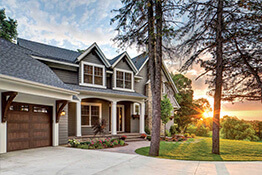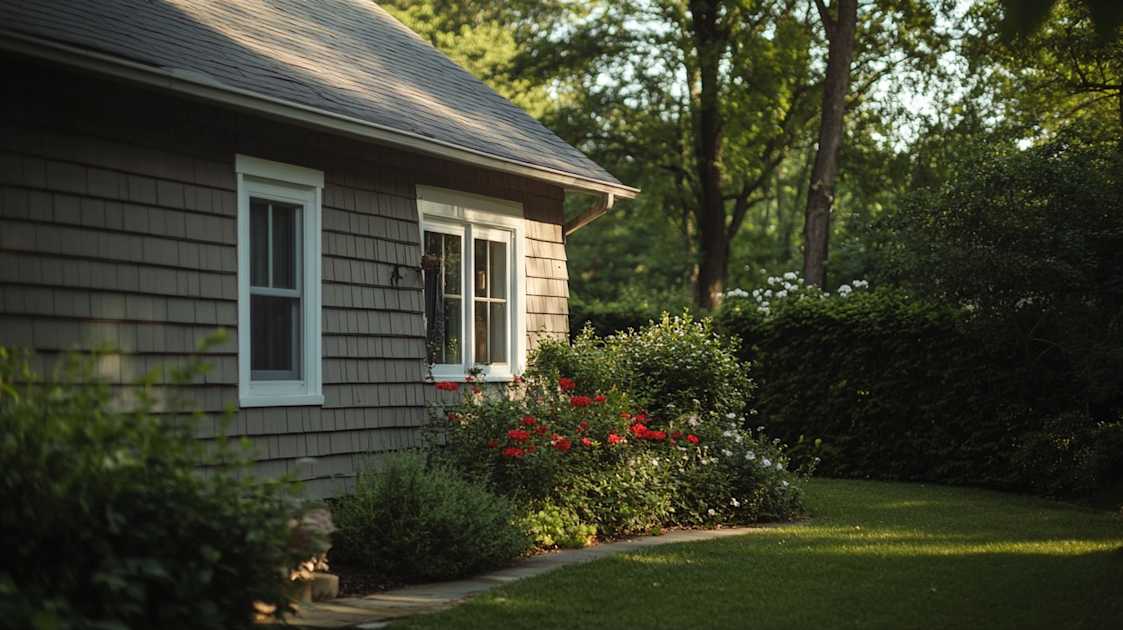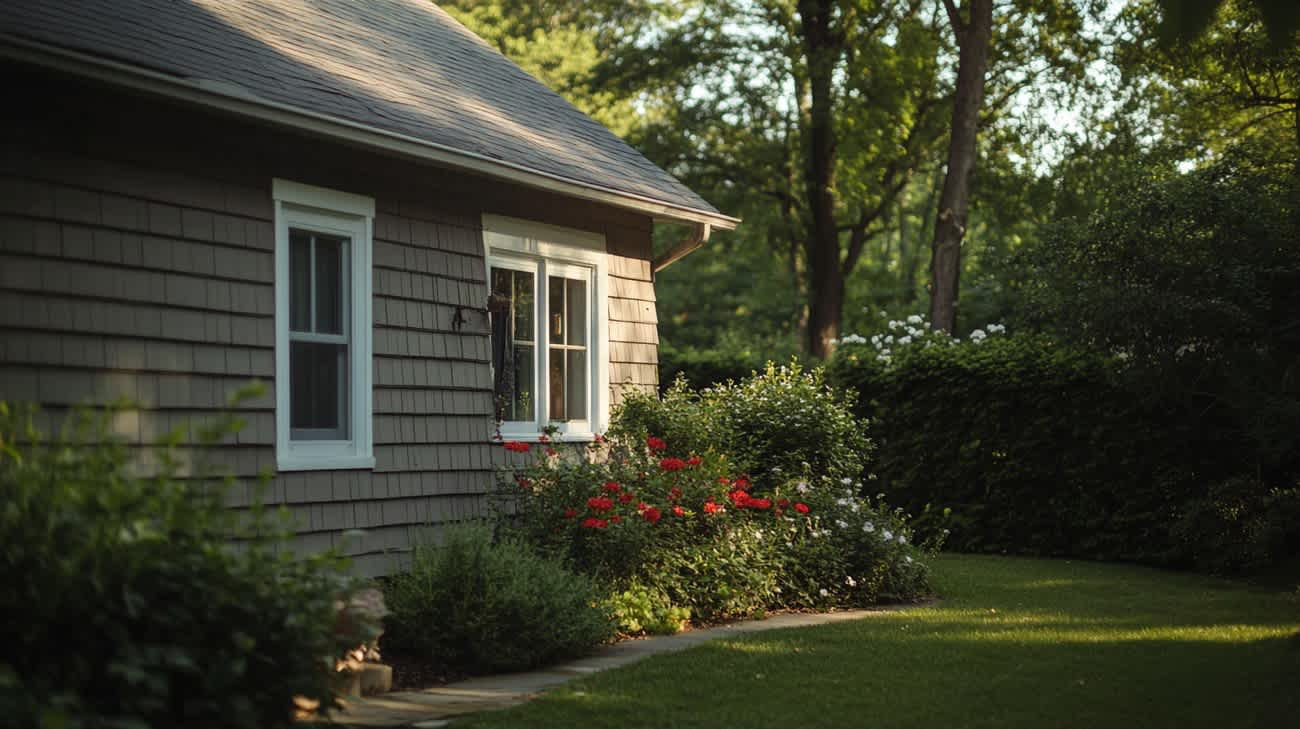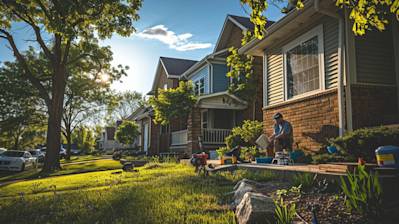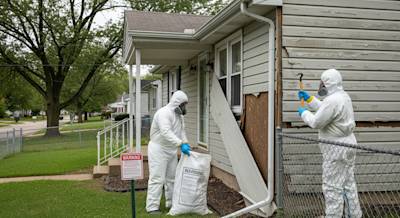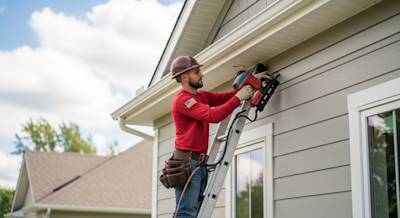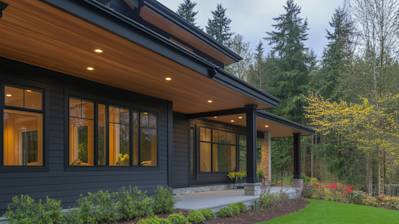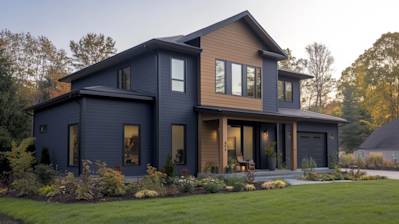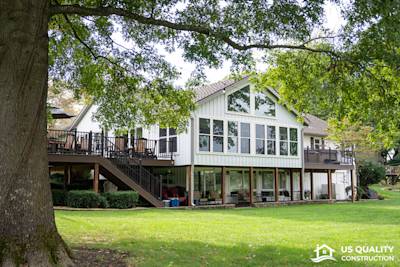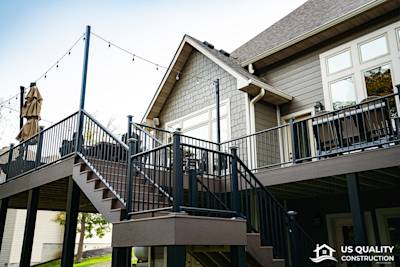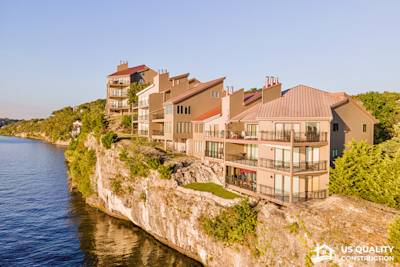Shingle siding has been capturing the attention of homeowners due to its attractive visual appeal and durability. It presents a unique blend of sophistication and simplicity, making it a sought-after choice for property owners who desire a warm, inviting facade for their homes. This comprehensive guide aims to explain all there is to know about shingle siding, leaving no stone unturned.
Shingle Siding: What is it?
Shingle siding, commonly referred to as "shake siding", is a type of home exterior constructed of small, individual pieces of wood arranged in an overlapping pattern. These 'shingles' are typically shaped into rectangles but can adopt a variety of other shapes depending on aesthetics and architectural preference. The use of shingle siding is a tradition dating far back in North American history, being a popular feature in many heritage and colonial era homes.
Different Types of Shingle Siding
Let's delve into the most commonly used types of shingle siding to help you understand which style suits your needs and preferences:
Cedar Shingle Siding
Cedar shingle siding is an attractive, durable, and eco-friendly option. It offers excellent insulation and holds up well to pests such as termites and other damaging insects.
Pine Shingle Siding
Pine shingle siding is another durable option that provides a charming rustic look. It needs to be properly treated to resist insects and rot.
Vinyl Shingle Siding
Vinyl shingle siding is a low-maintenance, cost-effective option that mimics the look of real wooden shingles without the need for frequent treatment or maintenance.
The Creation Process of Shingle Siding
Shingle siding creation involves splitting or sawing logs into small, thin sections. Splitting is preferred as it reveals the natural grain and texture of the wood, whereas sawing can result in smooth finishes.
Post the splitting or sawing, shingles are typically treated for resistance against insects, fire, and UV rays. They also undergo a staining process for added aesthetics before being installed onto the building walls.
Factors to Consider When Choosing Shingle Siding
When deciding on using shingle siding for your home, here are some critical points to remember:
- Climate: This siding performs best in regions with moderate climates. In areas with high humidity, wood shingles may warp or rot, unless properly treated and maintained.
- Maintenance: Regular care is essential to maintaining the beauty of your shingle siding. This might include regular staining or painting, and replacing damaged shingles.
- Cost: Quality shingle siding can be an investment. The material and style you choose can significantly impact the cost.
Installation of Shingle Siding
Proper installation of shingle siding is crucial to its durability, protection, and aesthetics. It can be a DIY project for those with advanced skills or left to professional installers. Here's a simple breakdown of the process:
Preparation of the Wall: The wall where the siding will be installed should be clean and smooth. Builders paper or house wrap is typically applied to shield the wall from moisture.
First Row Installation: The first row of shingles is installed at the bottom, ensuring it is level. Shingles are overlapped and frequently checked for level.
Additional Rows: With each added row, they are offset so the gaps between the shingles are filled by the row above, creating an efficient water barrier.
Final Row: The final row is often trimmed and installed under the eaves, ensuring a uniform appearance against the roofline.
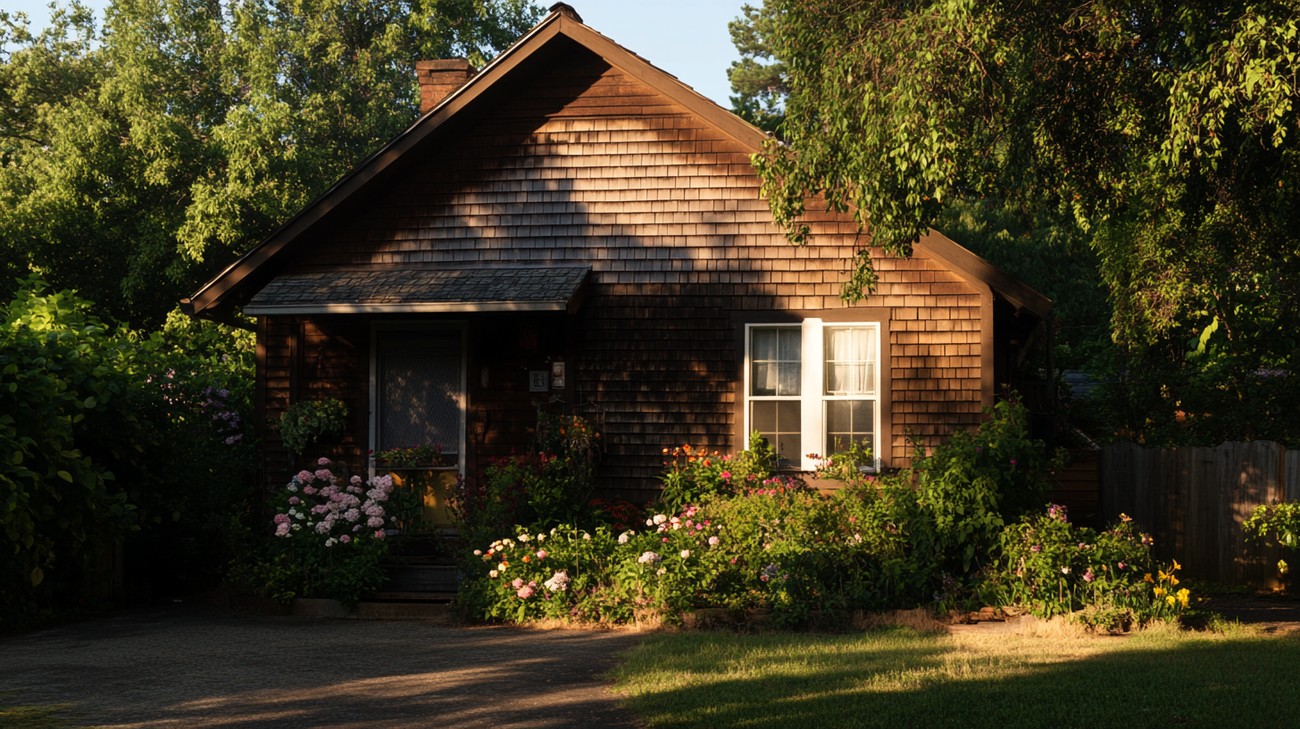
Frequently Asked Questions about Shingle Siding
How long does shingle siding typically last?
The lifespan of shingle siding depends on the type of material. Wood shingle siding, if properly maintained, can last up to 30 years. Vinyl and fiber cement shingle siding have a longer lifespan, typically lasting around 40 to 60 years. Metal shingle siding is the most durable, often lasting up to 70 years.
How is shingle siding installed?
Shingle siding is installed in a course style from the bottom of the wall up. This overlapping system allows rainwater to flow down the wall without penetration. Longer shingles are used for the first course to create a solid base. The rest of the shingles are then placed on top, always ensuring to overlap the shingle below.
What factors impact the cost of shingle siding?
There are several factors which impact the cost of shingle siding. The type of material chosen significantly affects the price, with wood and metal typically being more expensive than vinyl and fiber cement. The size of your property and the complexity of installation can also impact the final cost. Other factors include your geographical location, labor costs in your area, and whether any additional exterior upgrades are required.
How is shingle siding maintained?
Maintenance procedures for shingle siding depends on the material used. Wood shingle siding needs regular power washing, staining, and sealing to protect it from weather elements and pests. Vinyl and metal shingle sidings require minimal maintenance, usually just a regular wash to keep them looking good. Fiber cement siding needs occasional painting every few years to keep its appearance fresh.
Can shingle siding be painted?
Yes, shingle siding can be painted. For wood shingle siding, it's advisable to wait for the wood to weather a bit so the paint adheres properly. For fiber cement and vinyl sidings, a good quality latex exterior primer and paint should be used. Metal shingle siding can be painted, but it's not usually necessary as most come with a finish that is designed to last.
What is the environmental impact of shingle siding?
Shingle siding comes with its own set of environmental pros and cons, which vary depending on the material. Wood shingles, for example, are natural and biodegradable but their production does require significant energy. Vinyl shingles are not biodegradable but they do require less energy to manufacture. Fiber cement shingle siding is very durable and requires less frequent replacement, but its production process releases greenhouse gases. Metal shingle sidings are often made from recycled materials and can also be recycled at the end of their lifespan.
Are there energy-efficient options for shingle siding?
Yes, most shingle siding options have energy-efficient versions. Insulated vinyl shingle siding, for example, helps to reduce thermal bridging and improve your home's energy efficiency. Fiber cement and wood shingles also offer good insulation properties, especially when installed correctly. Metal shingles, on the other hand, reflect solar radiation reducing the cooling demands of your home during the summer.

Pros of Shingle Siding
Versatile Aesthetic
One of the most significant advantages of shingle siding is its aesthetic versatility. Shingle siding can be tailored to suit a variety of architectural styles, from modern to traditional and even rustic designs. Options vary from rough-hewn shingles that exude a timeless and classic charm to sleek and smooth shingles for a more contemporary appeal. Therefore, whether the exterior design of your home leans towards the old-world or the avant-garde, shingle siding has got you covered.
Durability
Shingle siding made from high-quality materials such as cedar or vinyl can be incredibly durable. The toughness of these shingles can stand up to various weather conditions, including wind, rain, and snow. Moreover, cedarwood has natural preservatives that make it resistant to decay, insects, and even fire. As a result, homeowners can expect their shingle siding to last for many years, often as much as 20 to 30 years, with proper care.
Insulation
Shingle siding provides excellent insulation, contributing to the energy efficiency of a home. The thickness and the way shingles are laid out create an effective barrier against heat transfer. Whether it’s the chilly winds of winter or the scorching heat of summer, shingle siding can help maintain a comfortable indoor temperature throughout the year, potentially lowering utility costs.
Low Maintenance
While shingle siding does require some upkeep, its maintenance demands are typically less than other siding options. For instance, depending on the material, a simple cleaning once or twice a year may suffice. Unlike painted siding, you won’t need to repaint shingle siding often, especially if it's stained rather than painted.
Cons of Shingle Siding
Cost
One potential downside of shingle siding is cost. While the price can vary greatly depending on the material (with vinyl shingles being more affordable than cedar), it is generally more expensive to install than other siding types. Additionally, if shingles need to be replaced due to damage or age, it might prove costly as the replacement often involves removing and replacing many shingles, even if only one is damaged.
Installation Complexity
The installation of shingle siding is more complex and time-consuming compared to other siding materials like aluminum or vinyl panel. Each shingle must be individually installed, and this can take a considerable amount of time and skill. This not only contributes to the higher installation costs but also means that DIY installation may not be feasible for most homeowners.
Potential for Water Damage
While shingle siding is highly resistant to weather conditions, it is slightly more susceptible to water damage compared to other types of siding. If not installed correctly with ample barriers and proper sealing, shingle siding can trap moisture, leading to potential water damage and rot over time. Periodic maintenance and inspection are required to fix any such issues early on.
Insect Damage
Depending on the material, shingle siding may be prone to insect damage. For instance, wood shingles are attractive to wood-boring insects. Termites and carpenter ants, in particular, can cause severe damage if not detected and treated early. To avoid such issues, it’s recommended to treat wooden shingle siding with a pesticide periodically or opt for insect-resistant varieties like cedar.
Need for Regular Maintenance
Despite the relatively low maintenance needs, shingle siding does require regular care to keep up its appearance and durability. This may involve periodic staining or painting, especially for wooden shingles, to prevent fading, decay, and damages. Additionally, cleaning to remove dirt, mold, or mildew is critical in maintaining the visual appeal and extending the lifespan of shingle siding.

Myths and Misconceptions about Shingle Siding
Shingle siding, widespread for its aesthetic appeal and traditional charm, comes with a myriad of myths and misconceptions. It's high time we debunk these baseless beliefs and arm you with facts to make informed decisions.
Myth 1: Shingle Siding is High-Maintenance
Misconception: Shingle Siding Requires Constant Attention
One common belief is that shingle siding is excessively high-maintenance. It's often assumed that it requires continuous attention, near-constant repairs, and frequent replacement.
Truth: A Balance of Care and Durability
While it's true that shingle siding, especially those made from wood, requires maintenance, it's not as demanding as often portrayed. The upkeep mostly involves staining or painting every few years to protect against weathering and staining. As for durability, when properly maintained, shingle siding can last for decades—up to 50 years or more for cedar shingles.
Myth 2: All Shingle Siding is Made from Wood
Misconception: Shingle Siding Always Means Wood Siding
For many, the term 'shingle siding' is synonymous with wood siding. This belief probably arose because the first shingle siding made was from wood, such as cedar or pine.
Truth: Variety of Materials
In reality, besides wood, shingle siding can be made from an array of materials like vinyl, fiber cement, and even metal. These alternatives offer the same attractive appearance of wood but provide different benefits, such as less maintenance or better fire resistance.
Myth 3: Shingle Siding is Expensive
Misconception: Shingle Siding is Only for Luxury Homes
Another widespread myth is that shingle siding is wildly pricey, making it suitable only for high-end or luxury homes.
Truth: Cost Varies with Material and Installation
While wood shingles, particularly cedar, can be more expensive than some other siding options, consider the alternatives. Vinyl and fiber cement shingles often are more cost-effective and still offer the same aesthetic appeal. Remember, installation costs also contribute to the overall expenses. Therefore, choosing suitable materials and a reputable contractor can make shingle siding a viable option for various budgets.
Myth 4: Shingle Siding is Not Eco-friendly
Misconception: Shingle Siding Harms the Environment
Some people believe that shingle siding, especially when made from wood, contributes substantially to deforestation and is not eco-friendly.
Truth: Sustainable Practices are Common
Most manufacturers today source from forests managed sustainably, contributing to a more balanced ecosystem. Wood is also a renewable material, and old siding can be recycled or composted. Moreover, choices like fiber cement are made from sustainable materials like sand and cellulose fibers, providing a significantly low environmental impact.
Myth 5: Shingle Siding is Not Durable
Misconception: Shingle Siding Doesn't Last Long
Many folks have the misconception that shingle siding doesn't have a long lifespan and requires frequent replacements.
Truth: Longevity is Based on Care and Quality
Properly maintained high-quality shingle siding can last for many decades. Cedar shingles, for instance, can endure up to 50 years or more with regular care. The key is to invest in good quality siding from reliable manufacturers and ensure proper installation and maintenance.
Remember, misconceptions do not form a secure basis for your decisions. When it comes to shingle siding or any siding materials, rely on facts and professional advice to make knowledgeable choices for your home.
Summary
Shingle siding is a classic choice for homeowners who desire a timeless and robust look for their homes. It's been a staple in American architecture for centuries, too, and it's not hard to see why. Shingle siding offers an unbeatable combination of aesthetic appeal and durability. You can get it in a variety of materials, including cedar, vinyl, and fiber cement, which gives you the flexibility to pick what works best for your house and your budget.
Of course, like any siding option, shingle siding isn't without its drawbacks. For one, it can require a bit more maintenance than other siding materials, particularly if you opt for natural wood shingles. But remember, with regular care and attention, your shingle siding can last for many decades. Besides, the rustic appearance that develops over time is part of its charm too!
All things considered, shingle siding is worth considering when you're looking to enhance your home's exterior. It's no wonder it remains a popular choice for homeowners across the country. So if you're thinking about a home renovation or building a new house, don't overlook shingle siding. After all, good siding goes a long way in elevating your home's curb appeal and its overall value.
About US Quality Construction
US Quality Construction is a proud cornerstone of Kansas City, Missouri, providing top-tier construction services to our revered community. With passionate fervor and an unyielding commitment to quality, we've transformed countless visions of diverse home renovations and brand-new homes into reality. Being a team of seasoned industry professionals, we blend state-of-the-art construction techniques with undiluted individual attention to deliver results that speak for themselves. As a local business, our hearts reside here in Kansas City, ingraining a deeper interest in fostering relationships and creating structures that enhance our beloved city’s landscape. Strategizing, executing, and delivering on time is in our DNA at US Quality Construction, Kansas City, MO. Come, join us in our ongoing journey of transforming dreams into tangible realities, one project at a time.
Tags: home improvement, exterior design, siding installation,
